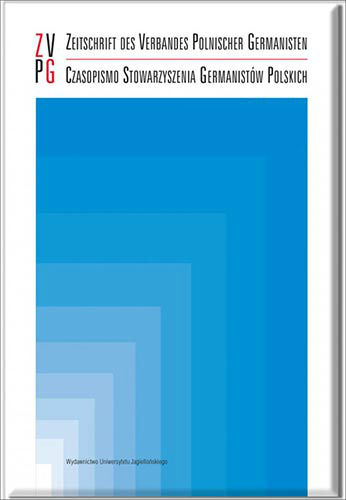Rektionskomposita und Argumentvererbung – ein deutsch-polnischer Vergleich.
Reaction compounds and argument inheritance - a German-Polish comparison.
Author(s): Jarosław AptacySubject(s): Language and Literature Studies, Theoretical Linguistics, Morphology, Syntax
Published by: Wydawnictwo Uniwersytetu Jagiellońskiego
Keywords: word formation; synthetic compounds; argument linking; argument structure; suffix;
Summary/Abstract: The topic of the following article is the German compound nouns with a deverbal head. Specifically, a subgroup of the compound nouns will be discussed, called ‘Rektionskomposita’ in German and ‘złożenia rekcyjne’ in Polish. In these constructions the first part of the compound noun fills in “the empty slot in the argument structure of the head of the compound noun” (Olsen 1986: 67). It is generally assumed that the head opens free structural slots which can be filled in with grammatical elements that are linked to the head (argument linking). Such compound nouns have a structure which is similar to that of phrases / sentences, e.g. Wirtschaftsförderung vs. Förderung der Wirtschaft vs. Die Wirtschaft wird gefördert. First, the scope of the synthetic compound nouns will be limited. Then, the status of suffixes will be defined. In the assumed theoretical framework, suffixes are the head (Germ. Kopf) of the synthetic compound nouns. Further on an analysis of argument linking will be provided, based on the framework of the X-bar-syntax. In the second part of the paper an attempt will be made to determine what structural equivalents of the German synthetic compounds can be found in Polish and whether the argument linking follows similar principles as in German.
- Issue Year: 4/2015
- Issue No: 1
- Page Range: 1-16
- Page Count: 16
- Language: German

